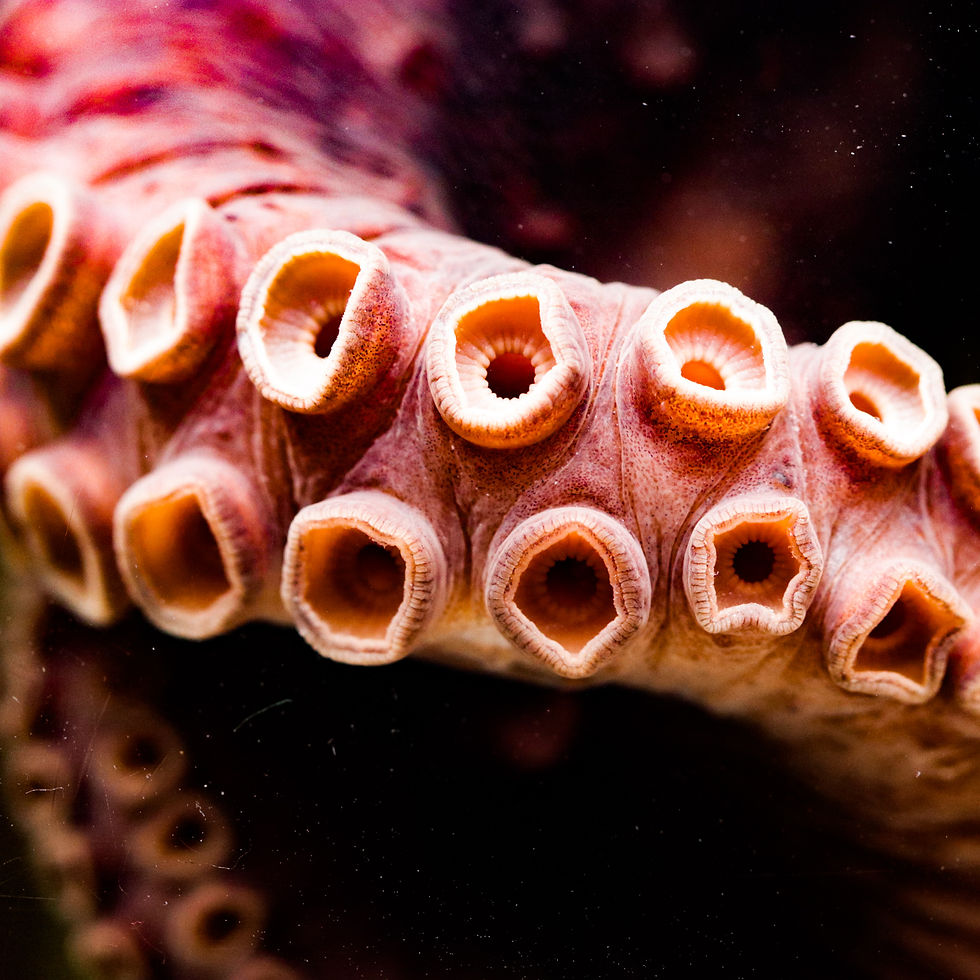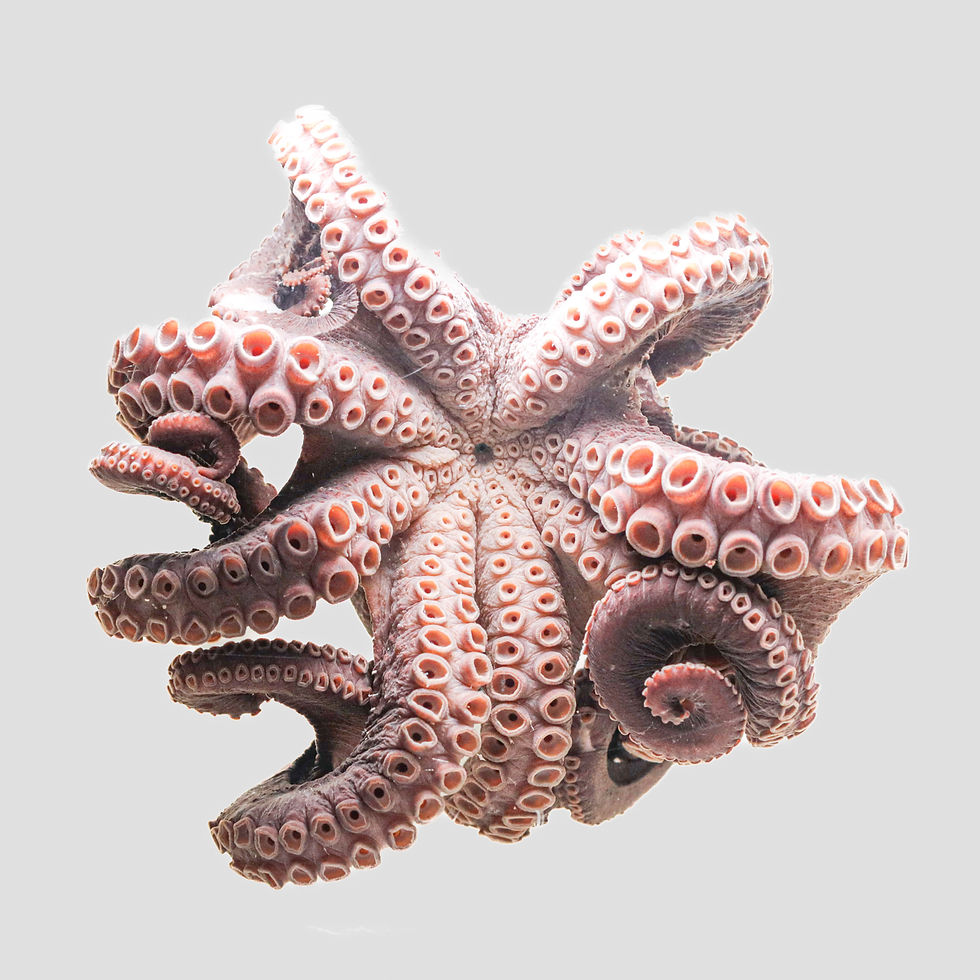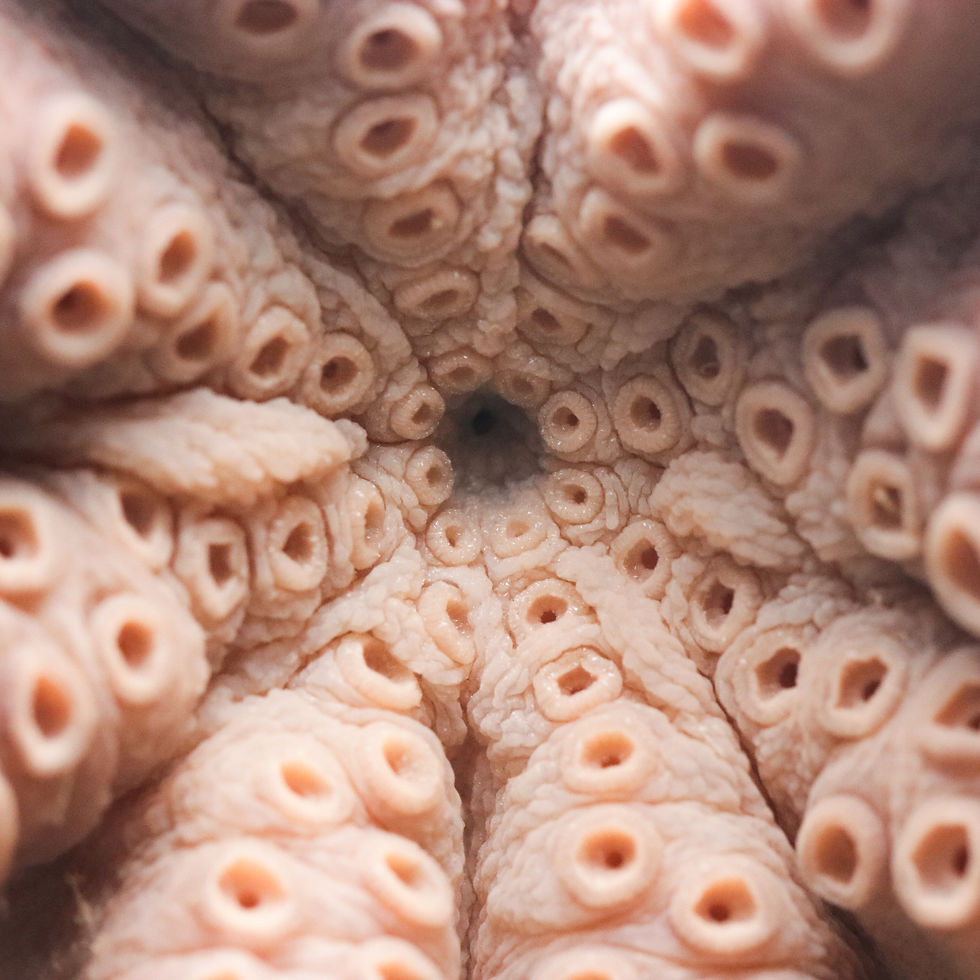Specimen Showcase | 🦶💭 Think on Your Feet
- Hong Kong Biodiversity Museum

- Mar 13, 2025
- 3 min read
The common octopus, 𝘖𝘤𝘵𝘰𝘱𝘶𝘴 𝘷𝘶𝘭𝘨𝘢𝘳𝘪𝘴 (Cuvier, 1797), is a species of cephalopod present in most of the world’s oceans, usually at 100 to 150 m depth. It is ubiquitous in the South China Sea and represents a main focus of marine aquaculture in China.

Cephalopods are a very old group of organisms which appeared in the late Cambrian around 530 million years ago. Modern cephalopod species are divided into hard shell nautiloids and soft body coleoids, the latter including the order Octopoda. Do you know where the name “octopus” comes from? It is from the Greek words for “eight” + “feet”, which of course makes reference to their eight tentacles. This animal’s anatomy and behaviour are far from straightforward and they have fascinated scientists for centuries. Let this post serve as a quick introduction to the strange and fascinating marvels of evolution - try to put yourself in an octopus’s many shoes and imagine experiencing the world as they do.

The 𝘖. 𝘷𝘶𝘭𝘨𝘢𝘳𝘪𝘴 nervous system is composed of three almost completely independent sections - the central brain, the optic lobes, and the arms. The arms have the most neurons (around 300 million), followed by the optic lobes and then the brain. The three parts are so independent that the brain has no control whatsoever over the movement in the arms and receives no proprioceptive input (sensing location and action) from that nervous system at all. This is to the point where an amputated octopus arm is able to respond to stimuli in the same way as an attached one - that is, until it runs out of fuel. Several stimulus and lesion studies have confirmed just how unrelated the parts of the nervous system are, and how each subzone functions.

Octopuses have impressive learning and memorisation capacities and can perform very fine and wide-ranging movements while having no bones. A common test of wits for 𝘖. 𝘷𝘶𝘭𝘨𝘢𝘳𝘪𝘴 is how long it takes them to open a jar without help. One test saw a smart little fella open a screw top jar from the inside, thereby escaping it in one minute! Not bad for a squishy sea monster.

𝘖. 𝘷𝘶𝘭𝘨𝘢𝘳𝘪𝘴 are also amazing at camouflage (just look up “octopus camouflage” on YouTube and be prepared to have your mind blown). What is even more amazing is that they developed colour discrimination via a complex mechanism different from the vertebrate eye, such that they are technically, by human standards, colourblind.

Octopuses have many chemosensors which, similarly to how we smell molecules in the air, detect or “smell” molecules dissolved in seawater. An octopus’s olfactory organs will extend on detection of chemical signals, and the body will orient itself to collect more detailed information, to figure out the spatial gradient and source of the chemical, providing navigational information and forming spatial memories. As for undissolved particles, they can “taste” or sense them through receptors on their arms’ suckers. These chemical cues combined with light input regulate all aspects of an octopus’s life: habitat, feeding, defense, mating…
Octopuses are extremely dedicated mothers. Once the female has mated and laid eggs, it will guard and clean them for up to 5 months, giving up feeding herself. When the eggs hatch, the mothers tend to die due to a fatal loss of body weight during the brooding period.

If you want to see some incredible octopus behaviour in action, My Octopus Teacher is a beautifully filmed 2020 documentary. In it, a man befriends an 𝘖. 𝘷𝘶𝘭𝘨𝘢𝘳𝘪𝘴 in South Africa, and it is as heartwarming as it is weird.
For a more up-and-close experience, come see our very own 𝘖. 𝘷𝘶𝘭𝘨𝘢𝘳𝘪𝘴 at the museum.
PS. World Octopus Day is on October 8th (get it?) - and this year it’s on a Saturday so make sure to add it to your calendar and give our specimens a special celebratory visit!
Text: Elvira Rey Redondo




Comments